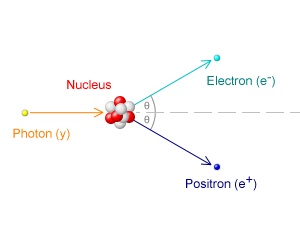Childinazoo, if you don't understant that, there is no hope for you.mistermack wrote: Energy based matter seems to be all there is. ( e=mc2 ).
.
Childinazoo, if you don't understant that, there is no hope for you.mistermack wrote: Energy based matter seems to be all there is. ( e=mc2 ).
But can you make QUANTITATIVE predictions of how much time dilation there will be? Mainstream physics can easily do that. Your physics can't.Farsight wrote:Mistermack: time dilation is the result of moving fast through space, or by being located in a region of high spatial energy density.
That's by continuity of gravitational potential, not from whatever word-drool you think is superior to making quantitative predictions.Farsight wrote:The latter is synonymous with a low gravitational potential, but not spacetime geometry. For example, if you were able to sit in a void at the centre of the earth, there's no spacetime curvature at that location, and no discernible gravity, hence you flaot around and you don't fall down. However this is the location where gravitational time dilation is at a maximum.
I mentioned charged pions because you had chosen not to take them into account. As to those decays, they happen not because a charged pion contains a muon and a neutrino, but because it's energetically permissible. A charged pion can also decay into an electron and a neutrino, something that mainstream physics accounts for very well, even down to the branching fraction, but which your theories cannot.Farsight wrote:It's low-energy proton-antiproton annhililation to neutral pions which decay in a femtosecond to gamma photons. All the "fundamental" quarks and gluons and strong force have totally disappeared, and all that's left is photons. You'll doubtless try to duck the issue by blustering on about cross-sections and charged pions, forgetting that they decay in a nanosecond to muons and neutrinos, and that muons then decay in a microsecond to electrons and neutrinos. And you'll also skate over the fact that the neutrino is a lepton. It isn't electromagnetic like the photon and the electron, but it certainly isn't some baryon.

The problem is, I do understand it, whereas you simply want that equation to stand for some kind of fiction that you have created. If you want to justify your fiction, show me that all energy is electromagnetic energy.mistermack wrote:Childinazoo, if you don't understant that, there is no hope for you.mistermack wrote: Energy based matter seems to be all there is. ( e=mc2 ).
.
No, if you've got a point to make, make it. Tell us clearly what you're getting at. Everybody else on here makes their points clearly, you make vague hints and never get to the point. If you want to argue, make it specific, otherwise you're a waste of time. What forms of energy are you referring to, and why are they relevant exactly?ChildInAZoo wrote:The problem is, I do understand it, whereas you simply want that equation to stand for some kind of fiction that you have created. If you want to justify your fiction, show me that all energy is electromagnetic energy.mistermack wrote:Childinazoo, if you don't understant that, there is no hope for you.mistermack wrote: Energy based matter seems to be all there is. ( e=mc2 ).
.
This is why you're a waste of time. You say you are trying to be clear, and specific, but you just say "some processes" or "some physical systems". Is that your idea of being clear or specific?ChildInAZoo wrote: We have identified non-electromagnetic processes that nonetheless occur in time and that nonetheless show time dilation of the sort we expect from SR. So Close is ignoring a very important difference in some physical systems, i.e., that there are some physical systems that are not electromagnetic.
.
There, that wasn't so hard was it? You could have gone a lot farther, but at least it's a start.ChildInAZoo wrote:NUCLEAR DECAY.
And while you're at it, ChildInAZoo, tell us whether you think nuclear decay rates are affected by relativistic time dilation.mistermack wrote:There, that wasn't so hard was it? You could have gone a lot farther, but at least it's a start. Now am I wrong, or is ALL THE MATTER in a nucleus directly convertible into energy? ( e=mc2 again ). And isn't ALL the interaction between fundamental particles done by electromagnetic, gravitational, strong and weak forces, all of which are properties of fields and limited by the speed of light?ChildInAZoo wrote:NUCLEAR DECAY.
Gravitational effects propagate at exactly the speed of light. Is that just a coincidence, or do you suspect any connection? And the same goes for any kind of particle. If they are totally foreign to light, why do they experience the same limit? Why not half the speed of light, or double? We may not DESCRIBE nuclear processes as electormagnetic, but nobody is saying what fundamental particles are made of, they just say "fundamental" and magically, every scrap of that particle can become energy. So I see no reason why nuclear decay is not energy based, and no reason why it shouldn't undergo time dilation for the same reason as everything else.
If you want to be clear and specific, tell us what you think fundamental particles consist of, why they can totally convert to energy, and why they are limited by c.
Users browsing this forum: No registered users and 11 guests